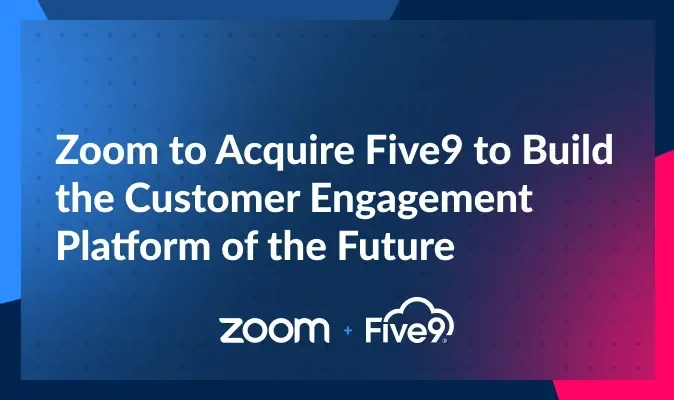
AI and the Future of the Contact Center
Contact centers are undergoing a significant technology-enabled transformation. Traditionally, the contact center has been a back-office function focused primarily on operational performance and cost reduction. Today’s modern contact center has a broader, more strategic role; namely to provide stellar customer experiences, drive up customer loyalty and increase revenue.
Two fundamental changes are helping drive this transformation.
First, is the shift to the cloud. This disruption of the on-premises contact center market and legacy contact center vendors is just beginning.
The shift to the cloud is opening the door to the next technology-enabled transformation for the contact center: Artificial Intelligence (AI).
AI is transforming the technology landscape, and the gateway to AI is access to vast quantities of data. The contact center itself is a very rich source of this data, from call detail records, to the full recordings of every call and contact you have with your customers. And, with recent advances in automatic speech recognition, those voice recordings will quickly become a source for training machine-learning models.
AI will transform every part of the contact center including:
- Virtual Agents - Replacing interactive voice response (IVRs) and the role of Tier 1 agents
- Agent Assistance – Using AI to guide and prompt live agents with the next best action throughout the customer interaction
- Business Insight - Transforming unused voice recordings into valuable business insights
- Agent Routing – Using AI to route customers to agents based on a deep knowledge of customer and agent profiles
- Quality, Compliance and Assurance – Using AI to automatically score and rate agent engagements for continuous improvement
This trend won’t play out overnight but it is clear that AI will play a transformative role for many years to come. According to Gartner, by 2021, 15 percent of all customer service interactions will be completely handled by AI, an increase of 400 percent from 2017.1
Agent Augmentation
While AI technology is often focused on automating workflows to replace humans (as in self-driving cars), our focus is not on the replacement of agents, but instead on augmenting live agents with AI – we call this Agent Augmentation.
Virtual Agents and Agent Assistance both are ways to augment a live agent. Virtual agents will deliver a human-like, voice-enabled conversational interface, which will replace IVR systems. Virtual agents could work standalone completely servicing a customer, or could be guided and directed by a live agent. Agent Assistance is AI guiding human agents to the best answers as fast as possible.
IVR systems have been around for decades and attempt to direct customers to the right agents, sometimes offering some limited self-service capabilities. Interactive Voice Assistants (IVA) represent an evolution of the IVR and aim to make it as easy to talk to the computer as you would a person. In practice, IVAs are often slow and frustrating for the caller. Both IVRs and IVAs have improved call deflection and costs savings for businesses, but in most cases, a delightful experience has remained elusive and customers don’t like them, preferring in most cases to speak to a human as quickly as possible.
AI plays a critical role in replacing these frustrating systems with natural conversational virtual agents, which can quickly resolve common issues and seamlessly connect to humans when necessary. As Gartner noted in a recent report, “the ongoing consumerization of AI — through the growing use and effectiveness of AI-enabled assistants such as Alexa and Google Assistant — boosts end users' awareness of, and expectations for, intelligent conversational interfaces to enterprise products and services.”2 As such, enterprises need to ensure they exceed those customer expectations. This is now achievable with AI.
The AI platforms required to produce realistic and human-like virtual agents is finally within view. Microsoft and Amazon each offer considerable AI capabilities in their platforms, as do IBM and Salesforce. And Google’s recent “Contact Center AI” platform moves that ball forward quite dramatically, with technologies like Dialogflow, AutoML, Topic Modeler, advances to ASR and more.
With these advances in AI – and ones I predict will come in the near future – it is entirely possible that the role of Tier 1 agents will be automated through Virtual Agents, which will allow those Tier 1 agents become Tier 1.5 or Tier 2 agents, seamlessly shifting to higher complexity work and engaging in real time with Virtual Agents when necessary.
###
1 Gartner CRM Vendor Guide, 2018
2 Gartner Artificial Intelligence Primer for 2018



